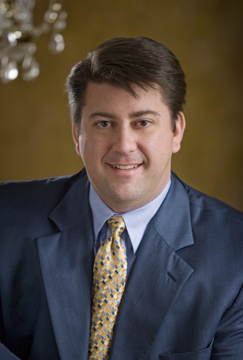 One of the biggest challenges for private practice spine surgeons is the growing regulatory burden placed on physicians. Increased documentation makes it difficult to operate the practice efficiently, and the additional documentation does little to improve patient care.
One of the biggest challenges for private practice spine surgeons is the growing regulatory burden placed on physicians. Increased documentation makes it difficult to operate the practice efficiently, and the additional documentation does little to improve patient care.
"We are keeping the bean counters happy," says Peoria, Ill.-based Prairie Spine & Pain Institute Co-Founder Richard A. Kube II, MD. "The documentation requirements are a real challenge to maintaining efficiency because we are distracted by things that aren't pertaining to the care of the patient. If there's one thing that's been an issue of irritation and disappointment over the past few years, it's been the additional documentation needlessly sucking up my time."
The additional time spent on documentation means that physicians are looking for ways to operate their practices even more efficiently. The key concepts for maintaining a well-run practice include:
• Good staff hires who can work efficiently
• Communication about staff expectations
• Rigorous staff training manuals and workflows
• Physician involvement in practice processes
"Well-educated and well-trained staff are essential," says Dr. Kube. "True physician involvement and understanding of what goes into the entire process is crucial, and then appropriate managers who can really stay on top of things and provide constant feedback and troubleshooting ensures the practice maintains the best efficiencies possible."
Process standardization
The best way Dr. Kube has found to combat the increasing documentation and inefficiency is process standardization. For example, instead of developing different patient intake forms for each physician, his group agreed on one form that everyone is comfortable with.
"There is always influx in the staff, but with the standard forms new staff members are easily trained and have a consistent idea of what is expected of them," says Dr. Kube. "They know what information they need to obtain and we automate much of that intake as well. If you are able to automate, you become a lot more efficient."
Practices lose efficiency when information is missing from patient forms because they must backtrack to retrieve it before moving forward with care. Checklists at the front desk ensure you have all the necessary items for every patients before their visit, shoring up back-end inefficiencies.
"If you are regularly obtaining these things at the front desk you can save a lot of time with just your clinical staff knowing when they pick up the data set it's complete and they know what's going on with the patient instead of having multiple people asking patients the same questions over and over again," says Dr. Kube.
Patient scheduling
Patient wait times are another important area for spine practices. Whenever possible, move patients through efficiently so there aren't delays forcing patients to wait for long periods of time.
"Wait times, unfortunately, to some degree are always going to be a necessary evil, but if you have physicians who are in touch with the realistic time it takes for them to work with their patients, you can minimize that," says Dr. Kube. "I don't really follow a set schedule with patients every 10 to 15 minutes, and I have some slots double-booked with others that are blank to catch up. Over time we've learned how to estimate the number of people who might need films, number of no-shows and those with ultra complex problems so we can stagger their visits accordingly."
At the beginning of the day, Dr. Kube typically schedules a new and follow-up patient for the first time slot. The new patient spends time completing paper work and may need an X-ray, so Dr. Kube sees the follow-up patient first; after that visit, the new patient is typically ready to go.
"It helps to make sure there is always an actionable thing happening to each patient," says Dr. Kube. "If something is happening — if they are filling out paperwork — they don't feel like they're just waiting. We also installed televisions in the lobby and exam rooms so there are always things they can do."
More Articles on Spine Surgery:
Healthcare Economics: 8 Ways Spine Surgeons Can Make a Differnece
Entrepreneurial Spine Surgeons: How They're Thriving Today
30 Spine Surgeons With Interest in Sports Medicine

